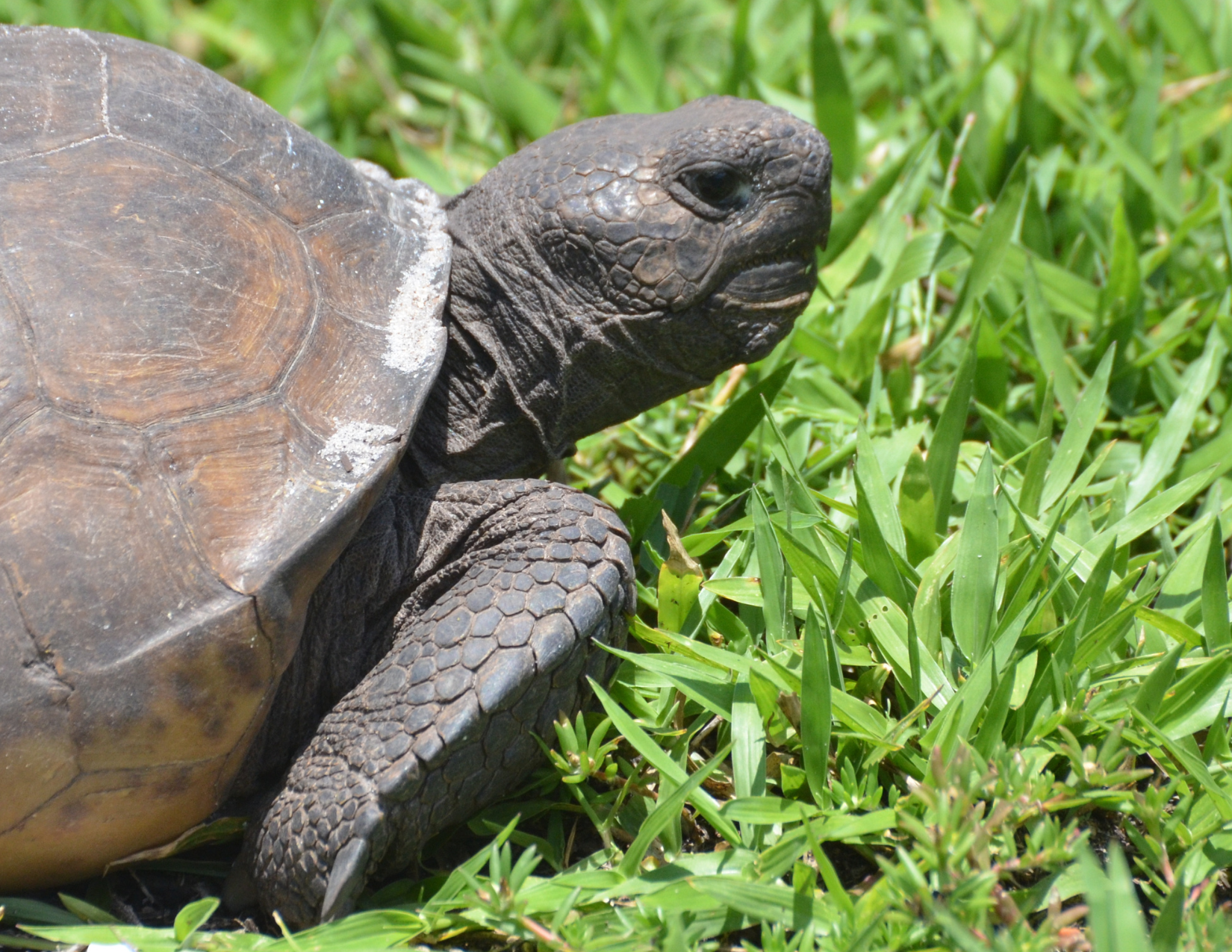Education: Creating Safe Homes for Florida’s Gopher Tortoises
August 2, 2025
In the heart of Florida’s rapidly changing landscape, the quiet presence of the gopher tortoise tells a powerful story. These ancient reptiles, known for digging deep burrows in sandy soils, create shelter for hundreds of other species. As development moves across the state, gopher tortoises and the ecosystems they support face growing threats.
One of the most effective ways to protect these species is through the creation of gopher tortoise recipient sites. These are specially managed properties designed to receive tortoises relocated from development sites.
Why Recipient Sites Matter
Gopher tortoises play a unique role in Florida’s upland habitats. Their burrows are used by more than 350 other animals, including rare species like the eastern indigo snake and the Florida mouse. Because of their ecological importance, gopher tortoises are listed as a threatened species under Florida law. Their burrows are also protected, meaning developers must follow strict rules before building on land where tortoises live.
That’s where recipient sites come in. These restored lands provide long-term homes for tortoises removed from construction zones. By doing this, they help meet conservation goals and allow projects to move forward responsibly. They also bring life back to degraded areas, improving plant diversity, soil health, and habitat for other species.
The Process to Create a Recipient Site
Setting up a gopher tortoise recipient site isn’t simple, but with the right guidance, it’s entirely doable and rewarding. The Florida Fish and Wildlife Conservation Commission has a clear process for landowners who want to turn their property into a certified recipient site:
Initial Consultation
A site visit with the FWC determines whether the land is a good fit. The property must be at least 25 acres and have features like open tree cover, native grasses, and well-drained sandy soils.
Site Assessment and Management Plan
A certified agent evaluates the land’s condition, documents current vegetation and soils, and creates a plan for restoring and managing the site. For instance, a site was approved after removing invasive plants and planting native grasses.Permit Application
Landowners and Revive Ecosystems submit an online application, including surveys and the management plan. Sites are classified by tiers based on their long-term conservation value, with Tier 1 offering the highest ecological benefit.Review and Approval
Once approved, the site receives a stocking rate, which determines how many tortoises can be relocated there. Most sites are allowed two tortoises per acre, though high-quality Tier 1 sites can support more.
How Relocation Works
Relocating gopher tortoises is carefully regulated to ensure they are safe and healthy. Here’s how the process typically unfolds:
Burrow Survey
A licensed agent surveys the land where development is planned. Every tortoise burrow must be identified and assessed before construction can begin.
Relocation Permit
Developers must apply for a permit to relocate tortoises, either to another part of the property or to a certified recipient site.Capture and Health Check
Traps or careful hand excavation are used to capture tortoises. Each animal is weighed, measured, checked for health issues, and tagged for monitoring.Soft Release at the Recipient Site
Tortoises are placed in temporary enclosures on the new site. This gives them time to settle in, start digging burrows, and find food and shelter before being fully released.Monitoring
Authorized agents check on the tortoises and submit reports to FWC for at least one year.
Understanding the Costs
The costs associated with relocating gopher tortoises can vary depending on project size, location, and habitat quality. Here’s a general estimate based on recent projects in Southwest Florida:
Burrow Surveys and Permitting: $1,500 to $7,000
Capture and Health Assessment: $500 to $2,000 per tortoise
Recipient Site Fees: $5,800 to $8,000 per tortoise, based on site tier
Mitigation Contributions: $200 to $1,000 per tortoise
Long-Term Management: Usually included in recipient site pricing
In one project near Naples, the relocation of 20 tortoises cost about $80,000, which included capture, relocation, recipient site fees, and required contributions to the state trust fund. While these costs may seem high, using a certified recipient site can help reduce delays, facilitate regulatory compliance, and offer long-term ecological benefits.
Restoration in Action
Recipient sites don’t just provide new homes for tortoises; rather, they help restore entire ecosystems. Some of the restoration efforts include:
Removing invasive species like Brazilian pepper or cogongrass
Replanting native species such as wiregrass and saw palmetto
Using prescribed burns to keep habitats open and healthy
Monitoring soil health, plant cover, and wildlife return
A 400-acre site near Naples saw a 45 percent increase in native vegetation after restoration. Over 800 tortoises now call that site home, along with dozens of other upland species. These results directly support Florida’s Wildlife Action Plan and new policies, such as Senate Bill 492, which promote regional-scale conservation.
How Revive Ecosystems Can Help
At Revive Ecosystems, LLC, we help simplify this complex process for landowners. Whether you’re trying to meet state regulations or want to turn your land into a thriving native habitat, we bring expertise in site restoration, permitting, monitoring, and long-term stewardship.
Want to learn more?
Contact us today to see how gopher tortoise recipient sites can support your conservation goals.
📞 239.633.8775
📧 lzenczak@reviveecosystems.com
Sources
Florida Fish and Wildlife Conservation Commission (FWC). Gopher Tortoise Permitting Guidelines, 2024.
FWC. Monitoring Reports: Collier and Lee Counties, 2023.
Palm Beach Post. Gopher Tortoise Relocation Costs Soar, 2021.
South Florida Water Management District. Southwest Florida Restoration Monitoring Report, 2023.
Vero News. Indian River County Faces High Relocation Costs, 2025.

